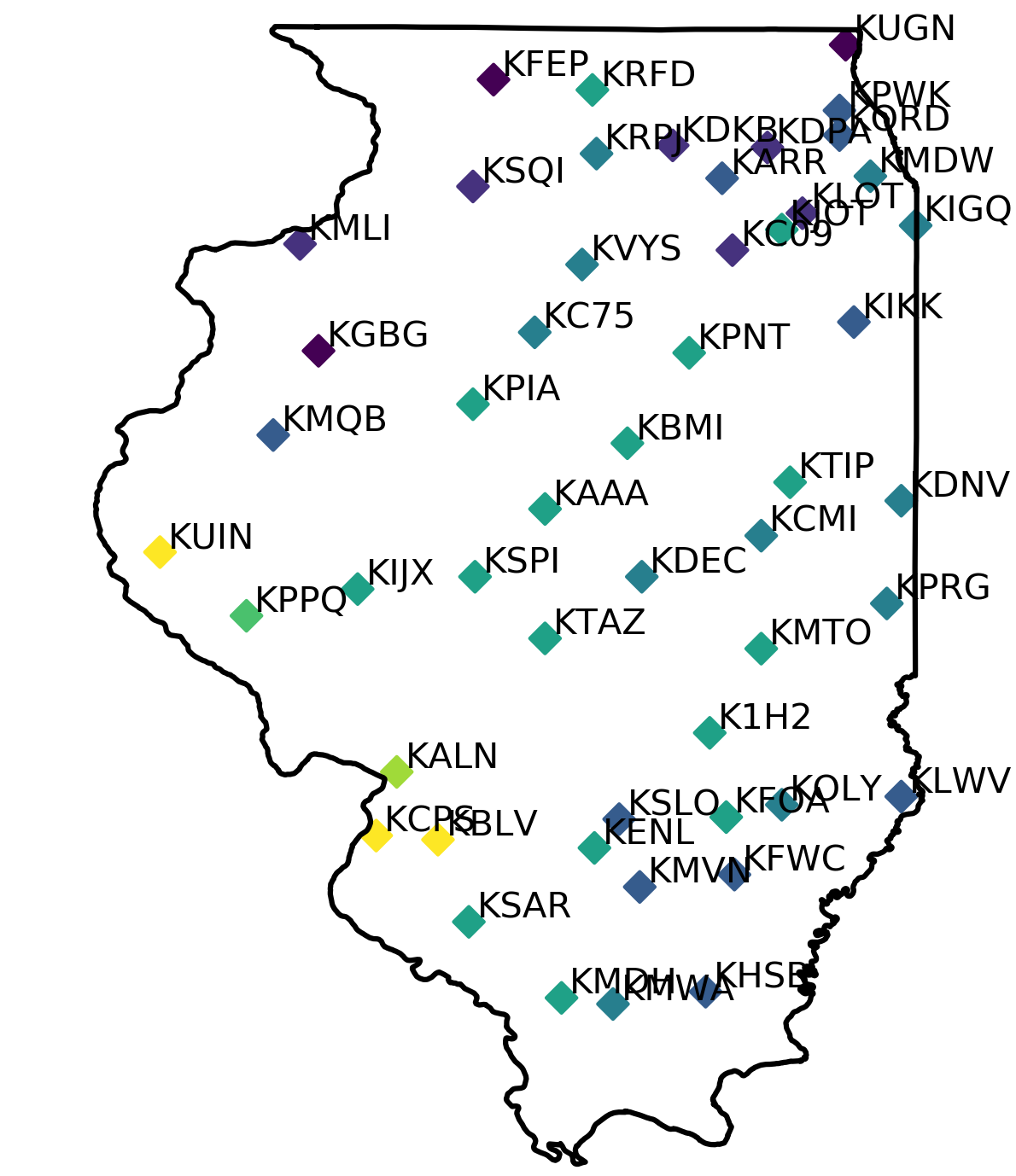This capstone project is built around using Python to collect data from a remote source, process the data by passing it between transformative scripts, and finally plot the data.
We will use current temperature data for the State of Illinois.
$ python grab-stations.py > stations.txt
$ python grab-forecast.py < stations.txt > forecast.txt
$ python plot-forecast.py < forecast.txtUrbana is 40.1097° N, 88.2042° W
$ python interp-forecast.py --lat=40.1 --lon=88.2 < forecast.txtWe highly recommend using the test-driven development process for this. Should you choose to work this way, you should first write tests for each step of your process (processing input, carrying out the calculation, and producing output) so that you know the program step works as expected. Here is a Software Carpentry lesson on test-driven development. Done properly, this should mean that we can randomize the scripts between groups and still have everything work as expected. If you prefer to dive write into writing the code, you can do so as well.
You need to write the following scripts:
grab-stations.pygrab-forecast.py
The following scripts are provided already in full:
plot-forecast.pyinterp-forecast.py
You may need to learn how to process certain kinds of data. For instance, how do you retrieve stdin standard input data from inside of a script? You can look in plot-forecast.py to get an idea of how that should work. You can retrieve data from a remote source using requests (several other libraries support this as well, but we think requests is the easiest one to use). The get function returns an object with a text attribute containing the retrieved data in HTML format.
To process data from standard input and output data to standard output, please check this Software Carpentry lesson. You may need to use .strip() to cut extra line breaks and spaces from the beginning and end of data. Move carefully and print results often to figure out what your code sees and to help guide what you need to process next.
grab-stations.py expects no input.
grab-stations.py produces a list of weather stations in the format
K1H2 -88.53 +39.07
KAAA -89.33 +40.16
KALN -90.05 +38.88
...
at stdout standard output. The weather stations are those of the state of Illinois, which may be found online at the National Weather Service. These should not be copied, but should be dynamically loaded from that site whenever the script is run.
grab-forecast.py expects input in the format
K1H2 -88.53 +39.07
KAAA -89.33 +40.16
KALN -90.05 +38.88
...
at stdin standard input.
grab-forecast.py produces a list of weather stations in the format
K1H2 -88.53 +39.07 76
KAAA -89.33 +40.16 69
KALN -90.05 +38.88 72
...
with the current temperature added as a fourth column at stdout standard output. The weather data should be retrieved from the National Weather Service in real time for the current temperature (row TMP), typically the first column (hour in UTC).
You should fork this project to work. We expect you to compose four scripts:
grab-stations.pyas described above.grab-forecast.pyas described above.test-grab-stations.pywith appropriate unit tests to make sure functions work as they should (if you used test-driven development).test-grab-forecast.pywith appropriate unit tests to make sure functions work as they should (if you used test-driven development).
